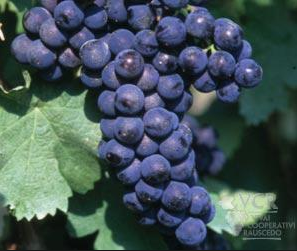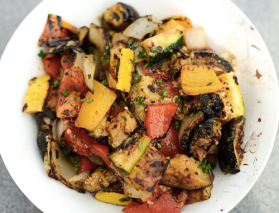The international wine press is beginning to catch on to what’s happening at the Fleuriet estate. I guess it’s possible that there’s a better winegrower working in Sancerre today than Bernard Fleuriet. There certainly are bigger, better known, higher-production estates. But I can’t imagine that there’s anyone making more brilliant white and red Sancerre with this kind of intensity, depth and utterly captivating complexity. Whether you’re a diehard Sauvignon Blanc lover or adore the kind of powerfully pure Pinot Noir you normally only find in 1er Cru Burgundy sites, you really simply have to try these wines.
The Fleuriet brothers established their estate in 1991 and over the years have accumulated about 50 acres of vineyards in 35 different plots across Sancerre. Their sites capture all of Sancerre’s mineral diversity, with about 10% of the vines growing on silex (flint), 40% on white Kimmeridgian limestone marls, and the rest on soils covered in chalk pebbles (Caillottes).
Mineral Diversity, Prime Locations
What all the sites share is prime locations – all face south or southeast to receive the warm sunshine needed to fully ripen Sauvignon Blanc and Pinot Noir in this northerly winegrowing region.
They work their vines as naturally as possible with minimal pesticides and no herbicides. Both for quality and reflecting the many steep slopes they farm, all Fleuriet grapes are harvested by hand and sorted to ensure only perfectly ripe, flavorful, grapes are used. And, from first pick to final bottling, Bernard Fleuriet takes extreme care to ensure the juice and wine are protected from oxygen beyond what they absorb from barrel and concrete tank.
Concrete … and Oak
For fermentation, Bernard generally prefers concrete to stainless steel, allowing very small amounts of oxygen in through the walls of the tank to accentuate texture and depth. Increasingly he is using egg-shaped fermenters which promote a constant, gentle, movement of the lees to add still more texture without having to open the tank for stirring.
And then there’s the oak. For the whites, as I said last year, I have never encountered a finer use of French oak barrel with Sauvignon Blanc (and, yes, I’ve tasted Didier Dagueneau’s much more expensive Pouilly Fumes). For the whites that see barrel, the oak is perfectly gauged to accentuate Sancerre Sauvignon Blanc’s inherent minerality and add fantastic depth and precision of texture without covering the ripe fruit in wood flavor. Seriously – it’s not possible to do a better job of matching wood to Sauvignon Blanc.
Revelatory Reds
The reds have been an equally impressive revelation. The “basic” La Magie des Cailloutes red is a more intense and ripe version of what you hope for in Sancerre rouge – a very Pinot Noir fruitiness with touches of earth and spice and a texture that invites enjoyment with everyday foods. The Sancerre Rouge Anthocyanes 2015 is something else entirely. Imagine Burgundy’s Jean Michel Guillon growing and making Pinot in Sancerre and you’ll be on the right track.
All of these wines are delicious today – as you’ll see when you come by Saturday, June 23, from noon-4pm to taste them with importer Olivier Daubresse. All will get even better over the next few years. And all are terrific values at our mix/match prices.
As you’ll see when you look at the wine descriptions, reviewers are beginning to realize what’s going on here, and the wines are earning big scores as they are tasted by the critics. Before the rush is on, come, try, and secure some for yourself.




 Grown in the steep hills of Italy’s Basilicata, inland from Naples, Aglianico is the best grape in the world that nobody knows (or, if you know it, don’t drink enough of). Wine writers try to get drinkers to pay attention to it by calling it “the Barolo of the South.” Because, like Piemonte’s Nebbiolo, it’s wonderfully aromatic, full of bracing acidity, laced with sharp, firm, tannins, and can live and gain complexity for decades.
Grown in the steep hills of Italy’s Basilicata, inland from Naples, Aglianico is the best grape in the world that nobody knows (or, if you know it, don’t drink enough of). Wine writers try to get drinkers to pay attention to it by calling it “the Barolo of the South.” Because, like Piemonte’s Nebbiolo, it’s wonderfully aromatic, full of bracing acidity, laced with sharp, firm, tannins, and can live and gain complexity for decades. And it’s wilder than Barolo, with a direct, assertive, ready to party by the grill, boldness and layer upon layer of summer-friendly wild herb, black olive, violet and earth notes. And while Aglianico from more famous Taurasi needs years in bottle to be much fun, many Aglianico del Vulture (like this one!) are delicious and ready to rock out on the deck as soon as they arrive in the USA.
And it’s wilder than Barolo, with a direct, assertive, ready to party by the grill, boldness and layer upon layer of summer-friendly wild herb, black olive, violet and earth notes. And while Aglianico from more famous Taurasi needs years in bottle to be much fun, many Aglianico del Vulture (like this one!) are delicious and ready to rock out on the deck as soon as they arrive in the USA.
 Sauternes and foie gras. Ribeye steak and Napa Cab. Meursault and lobster. Fine Bordeaux and roast lamb. Every wine has a perfect pairing, a match that elevates both the food and the wine. And for Aglianico, my perfect pairing is anything laced with salty/savory olives, roasted peppers, basil, and/or capers.
Sauternes and foie gras. Ribeye steak and Napa Cab. Meursault and lobster. Fine Bordeaux and roast lamb. Every wine has a perfect pairing, a match that elevates both the food and the wine. And for Aglianico, my perfect pairing is anything laced with salty/savory olives, roasted peppers, basil, and/or capers.